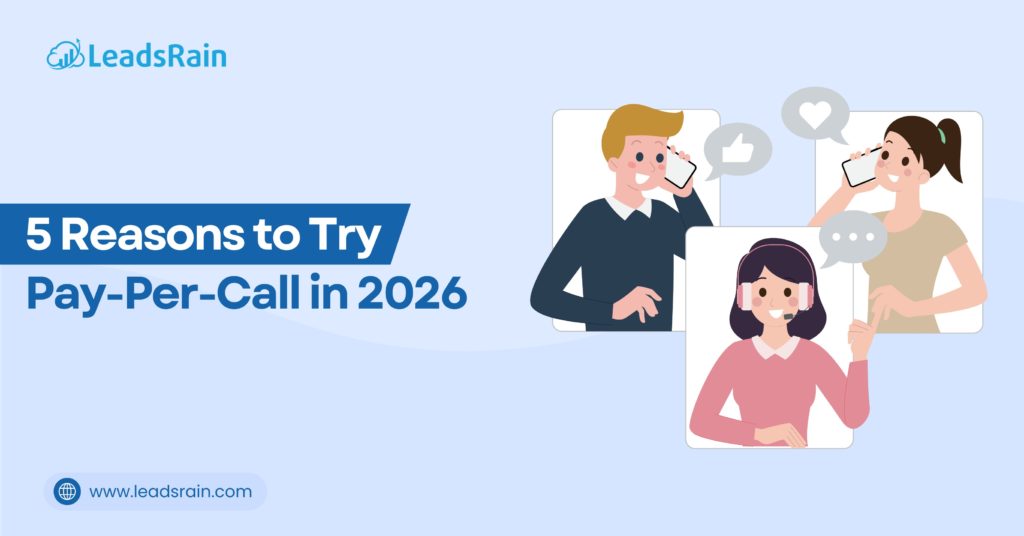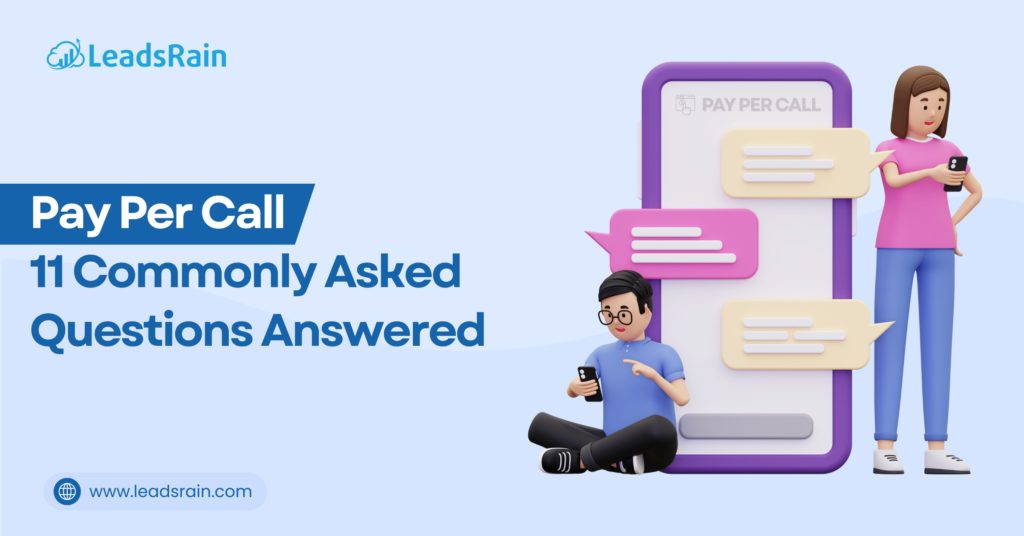As the renewable energy sector expands, solar companies must navigate a highly competitive market while maintaining efficient and scalable lead acquisition strategies. Traditional digital lead generation methods—such as online form submissions, email signups, or banner clicks—often result in low engagement and require extended nurturing cycles before a sales opportunity matures.
Pay Per Call introduces a more performance-oriented solution by connecting solar providers directly with prospects through live, inbound phone calls. These calls typically originate from consumers actively researching solar energy solutions—indicating strong purchase intent and a higher likelihood of conversion. The Pay Per Call model charges advertisers only when a qualified call is received, making it a cost-effective approach to generating real-time, high-intent leads.
This article explores the mechanics of pay per call marketing, its unique advantages for the solar industry, and how solar companies can implement it to drive more meaningful conversations, accelerate sales pipelines, and optimize marketing ROI.
Why Pay Per Call Works for Solar Lead Generation?
The solar market is competitive, and not all leads are created equal. Here’s why pay per call is especially effective in driving high-quality, high-intent solar leads:
1. Immediate Buyer Intent
A phone call indicates stronger intent than a form fill. When someone picks up the phone to ask about solar installation, they’re not just browsing—they’re actively seeking answers and likely comparing providers.
2. Better Qualification
Calls allow for real-time qualification. You can ask key questions during the call such as:
- Is the caller a homeowner?
- Do they have a high electricity bill?
- Are they located in an eligible solar market?
This prevents wasting time on unqualified leads.
3. Higher Conversion Rates
Leads that come through pay per call channels typically convert at a higher rate than those from traditional lead gen because:
- They’re already warmed up
- They’re in the moment of decision
- There’s less delay between interest and contact
4. Greater Trust & Personalization
Speaking with a real person builds trust—especially for high-ticket items like solar systems. Prospects get immediate answers and personalized attention, which improves your brand’s perception and increases sales readiness.
5. Pay Only for Results
You only pay when you get a qualified phone call. This performance-based model minimizes risk and maximizes ROI, especially when compared to buying cold data lists or running inefficient ad campaigns.
Who Should Use Pay Per Call for Solar Leads?
Pay Per Call is not a one-size-fits-all solution, but it delivers exceptional value for solar businesses and marketing partners that prioritize lead quality, sales-ready prospects, and measurable performance. It’s especially effective for organizations focused on scaling efficiently while maintaining control over lead qualification.
Ideal users include:
- Residential Solar Installation Companies
Looking to connect directly with homeowners who are actively seeking solar solutions. - Solar Marketing Agencies
Seeking to drive high-converting leads for clients through performance-based campaigns. - Lead Buyers & Aggregators
Who wants to purchase inbound traffic with verified intent, minimizing cold outreach. - Affiliate Marketers & Pay Per Call Networks
Specializing in driving call traffic via search, social, and other paid media. - Call Centers Handling Solar Campaigns
Equipped to answer and convert live calls into booked appointments or closed deals. - Companies Targeting Incentive-Driven States
Especially in regions like California, Texas, Florida, and Arizona where state or federal solar incentives drive higher consumer interest.
How to Get Started with Pay Per Call in Solar?
Launching a pay per call strategy in the solar industry requires a structured approach, combining the right technology, clear lead qualification criteria, and reliable traffic sources. Before diving into campaign execution, it’s essential to define your goals, understand your ideal customer profile, and establish a framework to track and optimize call performance. Whether you’re generating calls in-house or working with affiliate partners, laying the groundwork properly will ensure long-term success and scalability.
1. Set Clear Call Criteria
Define what makes a call billable:
- Minimum call duration (e.g., 90 seconds)
- Geographic location (by ZIP code or state)
- Caller profile (e.g., homeowner, credit score, income level)
- Time of day or business hours
2. Use Tracking Numbers
Work with a platform like Ringba, or LeadsRain to generate unique phone numbers for each campaign. This helps you attribute calls accurately and track performance by source.
3. Partner with the Right Affiliates or Networks
There are dedicated pay per call networks and solar lead marketplaces that specialize in high-intent call traffic. Some top examples include:
- Aragon Advertising
- HyperTarget Marketing
- OfferVault (for finding affiliate campaigns)
4. Optimize Your Call Handling
Train your sales team or call center to:
- Answer promptly (within 3 rings)
- Use call scripts to qualify and convert leads
- Record and review calls for quality assurance
- Follow up fast if the caller doesn’t convert immediately
5. Test & Scale
Start small with a test budget. Analyze which channels (search, social, display) bring in the best calls. Double down on what works and scale gradually. Focus on cost per qualified call and cost per acquisition (CPA) to measure efficiency.
Best Practices for Running a Successful Pay Per Call Campaign in Solar
To maximize the ROI of your pay per call efforts and ensure you’re generating high-intent solar leads, it’s important to implement best practices that align with both marketing and operational goals. Below are key strategies to improve call quality, increase conversions, and scale campaigns effectively:
- Define Clear Qualification Criteria
Establish what counts as a valid lead (e.g., homeowner status, credit score, electric bill minimum, ZIP code eligibility) before launching your campaign. - Use Dynamic Call Tracking Tools
Platforms like Ringba, Invoca, FlowUp or CallRail can track call sources, durations, and outcomes—helping you optimize ad spend and affiliate performance. - Train Call Handlers Thoroughly
Ensure your in-house reps or call center staff are trained to qualify leads, follow scripts, and handle objections professionally. First impressions matter. - Monitor Call Quality & Duration
Use call recordings and analytics to evaluate agent performance and detect low-quality traffic or fraudulent behavior. - Optimize Ad Messaging
Your ads (search, social, or display) should clearly communicate the offer and call-to-action, ensuring only genuinely interested users are prompted to call. - Test & Iterate Continuously
A/B test landing pages, ad creatives, call hours, and scripts. Use performance data to double down on what works and pause what doesn’t. - Ensure TCPA Compliance
Always follow Telephone Consumer Protection Act (TCPA) guidelines to avoid legal issues—especially when working with third-party traffic sources.
Bonus Tip: Combine with Ringless Voicemail Drops
Want to boost inbound calls? Use ringless voicemail drops to pre-warm cold homeowner lists. A voice message—delivered directly to voicemail without ringing—can promote your solar offer and invite the listener to call a dedicated number. This can fuel your pay per call funnel with even more inbound leads.
Final Thoughts
If you’re tired of chasing unresponsive leads or wasting budget on poor-quality solar inquiries, pay per call could be the game-changer you need. It combines high intent, real-time engagement, and cost efficiency, all while putting you directly in touch with homeowners who are ready to make a decision.
In the solar space, timing is everything—and with pay per call, you’re answering the phone when the timing is just right.




